Some of the mobile VAS services are around for more than two decades, helping operators increase their revenue and customer experience. Telenity develops its own VAS software for more than 20 years and serves in live networks of many operators around the globe. Thanks to the improvement in hardware infrastructure technology and cloudification; now it costs much less to host VAS services. Additionally, Telenity started Consolidation activities in 2014 and 2015 after the hardware improvements enabled the consolidation. And the first live deployment was completed in 2016.
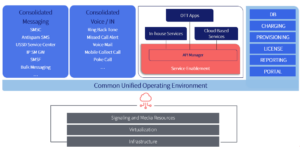

How Operators Can Benefit from Telenity VCP?
VAS consolidation presents several advantages to Mobile Network Operators as explained below:
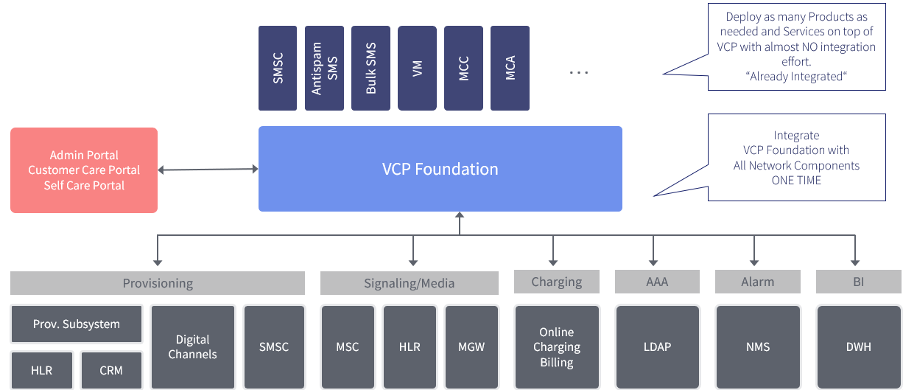
Runs on More Solid Hardware at a Lower Cost
Thanks to improvements in hardware infrastructure, every decade we have lower costs for more powerful and redundant resources. Moving each VAS service from a separate hardware host to a consolidated hardware environment will present benefits in terms of easier operations and lower hardware-caused errors and service disturbance. This will definitely reflect on the customer experience.
Operations and Monitoring of the Consolidated Hardware are Easier
Engineers need to learn and get expertise in a single GUI for services in a consolidated environment. Instead of putting effort into learning and operating different products and different GUIs for each VAS service, engineers can get in-depth knowledge and expertise in Single GUI.
Less Engineering Resources are Needed for Daily Operations
Less number of engineers can operate the consolidated VAS services, The remaining workforce can be used for other network improvement activities.
Also, the modification to existing services or speed of new VAS service launch is accelerated as well since there is much less need for coordination efforts for different products of different suppliers.
Single Integration Point
Thanks to the consolidated platform; there is no more need to integrate each and every VAS service with the other Network Functions separately. For example, one single Charging System integration on VCP, will be used by and serve all different services. Before VCP, each of these services needed separate installations, and integration with Network Functions. As another example, consider the integration with the Umbrella NMS system for alarms that will be redirected to NOC teams. Only a single integration with NMS is sufficient in VCP, whereas, in the past, each physical VAS product needed different integration with NMS. This single integration with NMS eliminated the risk of missing integration of different VAS services and makes life easier for both VAS engineers and NOC engineers, resulting in improved service quality.
Faster Deployment of New VAS Services
The services can be deployed much faster in a consolidated environment. In case other VAS services which can run on a consolidated platform are to be added in the future, they can be introduced in a much shorter time as well.
Single Reporting Infrastructure
Reports are critical in daily operations, both technically and for business teams. Instead of having separate reporting interfaces for different VAS services, consolidation presents a common environment for different services. This is easier to use and easier to integrate with other operator functions (CRM etc).
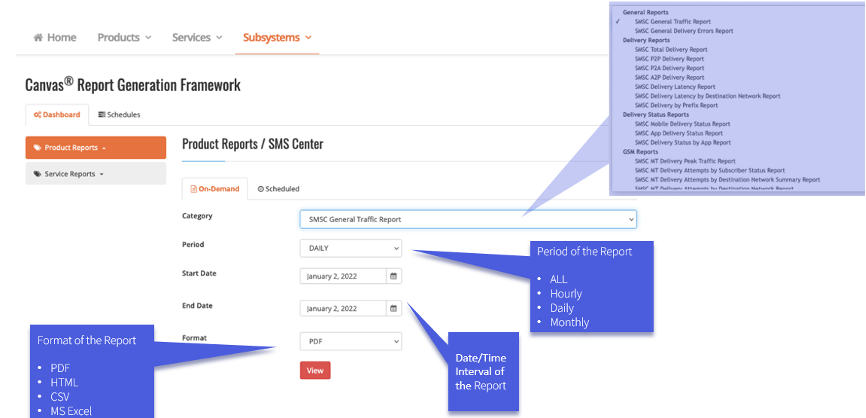
Built-in Reports
With the award-winning VAS Consolidation Platform, Telenity not only presents software but also presents built-in reports and knowledge and experience gained by the heritage in more than 20 years. Each product comes with built-in reports. These reports are available to use from Day-1. The content of the reports represents Telenity’s experience in the VAS domain for more than two decades, and reporting requirements in different operators worldwide have been reflected in the reports. The built-in reports bring quality to the operations without a delay. In the past, in an unconsolidated environment, operators wasted time understanding the reporting environment of each different product and had separate integrations with network and OSS/BSS and CRM; needed separate Database integrations and User Interfaces for reports of each product and each different vendor. This used to cause operational inefficiency. A consolidated environment and built-in reports will definitely help improve the quality of the service.
Flexible Licensing
Telenity VCP brings flexibility to licensing products using the same resources. For example, for messaging services under VCP, operators can switch between the limit values they reserve for different services.
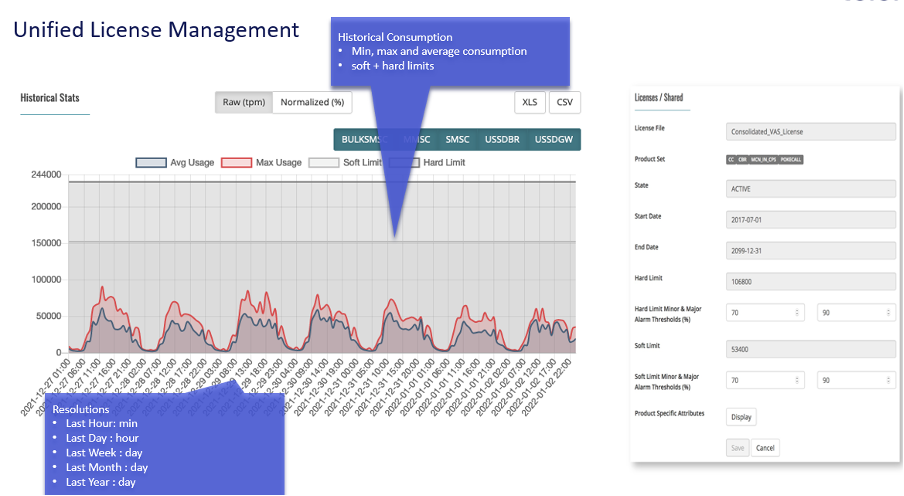
No Service Outage Upon Soft License Limit
Telenity’s Licensing mechanism allows operators to continue service when the soft limit is hit. It does not block traffic. For example, some enterprise customers need urgent SMS campaigns, but they will reach a simultaneous number of transactions when triggered. It is no problem, SMSC will not block the messages as long as the hardware limitations allow. In case the increased traffic requirement is not temporary but there is a need for a license increase, the operations team will have time to purchase without any service disturbance.
Common Provisioning Framework (CMPF) Module of Telenity VCP
Provisioning subscribers through different services is a very important step. This is the critical step where the subscribers begin to benefit from a service. It is important to easily operate the subscription provisioning. Telenity VCP instead of different interfaces for each product and service; a single CMPF module can be used to manage all subscription provisioning-related tasks for different VAS services. Managing subscriber provisioning for different VAS services through a single consolidated platform is much easier and reduces the probability of human errors that can be met when different provisioning interfaces for different services are used and also saves time and speeds up the service provisioning process.
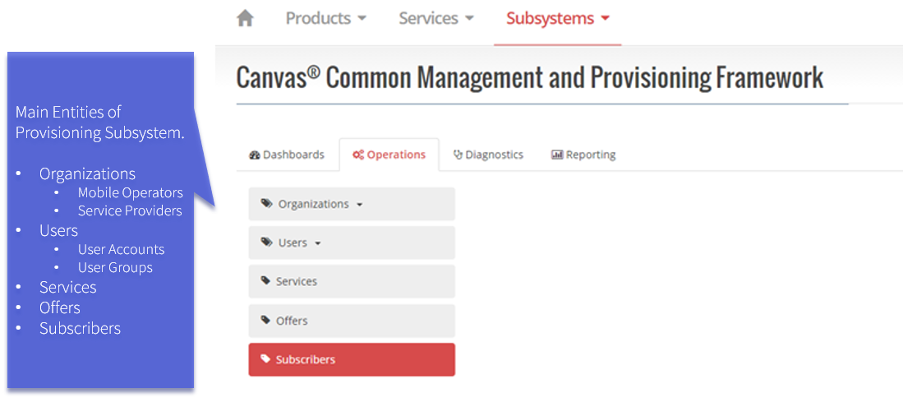
System-wide user-group/account/permission Management
Selecting and operating privileges for organizations, user groups and users centrally from a single interface is a big advantage for operations. This is not only important for security purposes but also serves to service quality.
Unified Portals
Telenity VCP has unified portals for all the services. Single “Admin” Portal for all Vas services and Single “Customer Care” Portal for all VAS services. It is very important that Customer Care can use the same GUI for different VAS services. Occasionally operators make additional investments to consolidate different GUI capabilities in front of a CC agent. Thanks to Telenity VCP however, there is already a consolidated platform for different VAS services to serve the Customer Care and Operation teams, which will definitely improve the service quality.
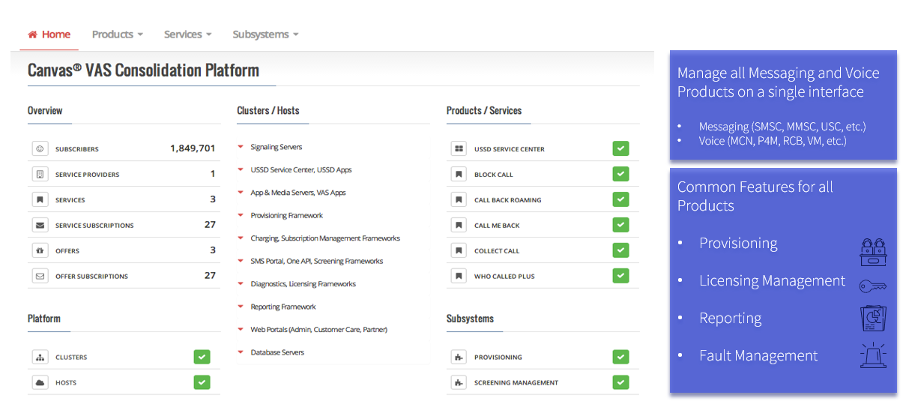
Product-based Detailed Troubleshooting
Under the Troubleshooting menu of the portal, the product to be troubleshot is selected and the same Portal GUI is used for troubleshooting all products. This not only makes the operations easier but also serves to standardization of the troubleshooting process for the VAS products under the VCP. A benefit that will improve the VAS service quality.
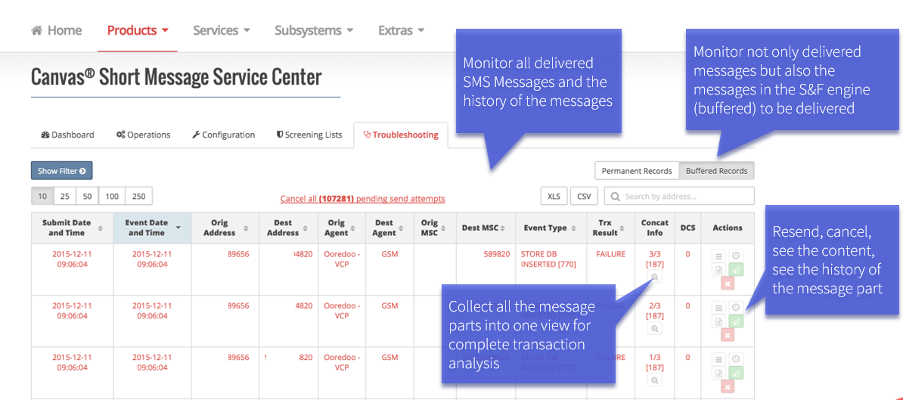
Less Number of VAS Vendors
Instead of supplying different VAS products from various suppliers, operators will reduce the number of suppliers with VCP. This will: • Bring operational efficiency to different teams: VAS NetOps and Planning, Marketing, Procurement, etc. • Reduce the integration effort and speed up the service launch durations.



